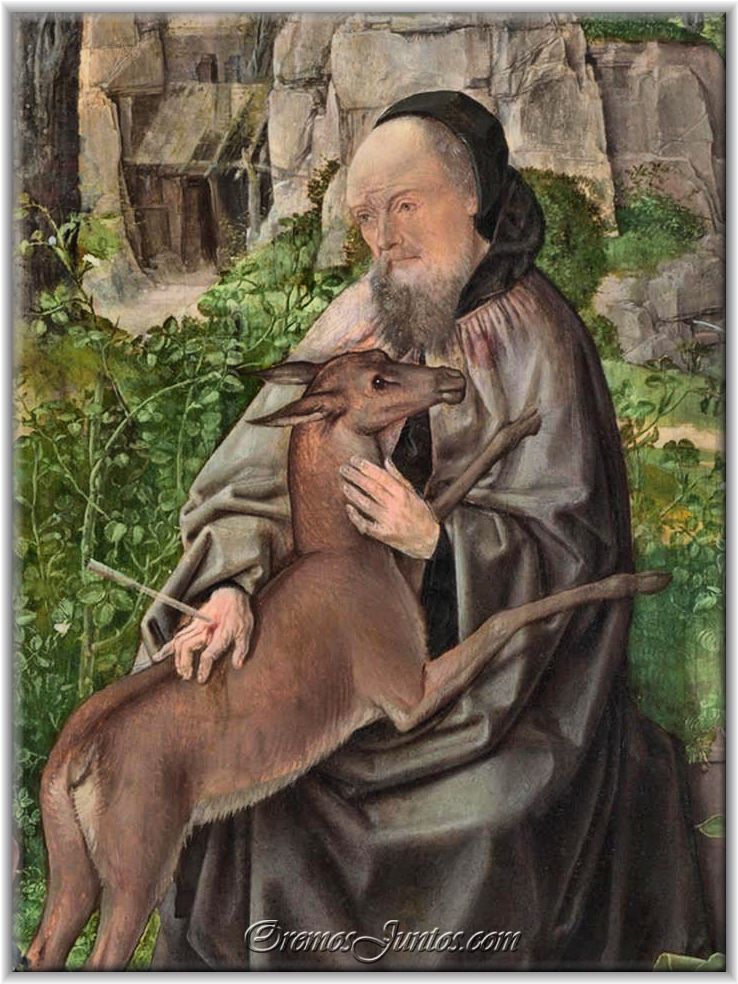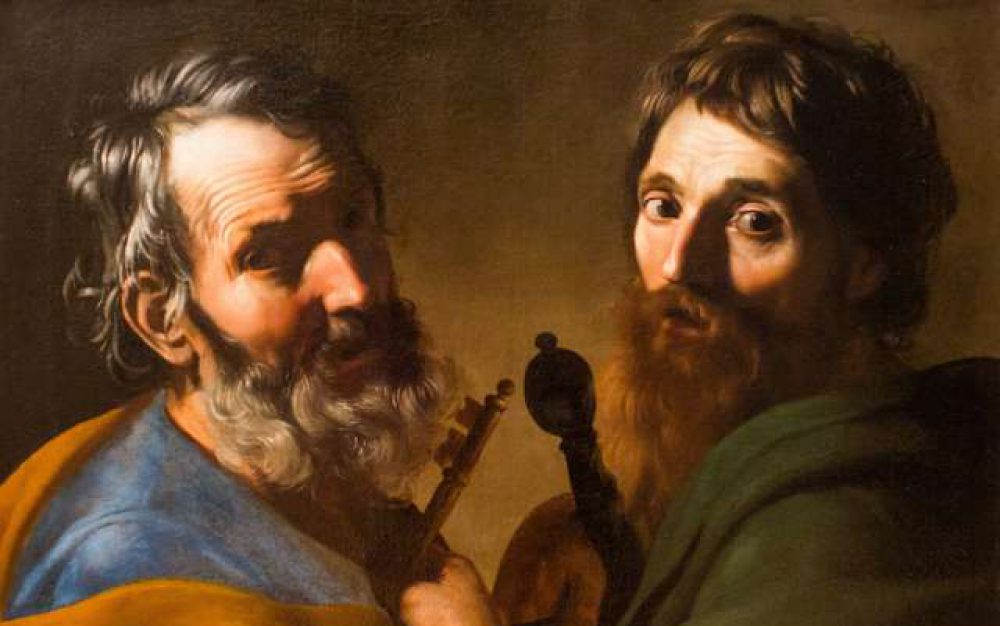Saint of the Day – 1 September – St Giles (c 650 at Athens, Greece – between 710 and 724 in France of natural causes). Monk, Hermit, Abbot. St Giles is also known as Giles the Hermit, was a Greek, Christian, hermit saint from Athens, whose legend is centered in Provence and Septimania. Giles founded the abbey in Saint-Gilles-du-Gard whose tomb became a place of pilgrimage. It was a stop on the road that led from Arles to Santiago de Compostela, the pilgrim Way of St. James. Giles is one of the Fourteen Holy Helpers. Patronages: • cancer patients; against breast cancer• epileptics; against epilepsy• against fear of night or noctiphobia• mentally ill people; against insanity or mental illness• lepers, against leprosy• against sterility• beggars• blacksmiths• breast feeding• disabled, handicapped, crippled or physically challenged people• forests, woods• hermits• horses• paupers, poor people• rams• spur makers• Monte San Savino, Italy• Tolfa, Italy• Edinburgh, Scotland.
The life of St Giles, known in early writings as Aegidius, is derived from a mixture of legend and history woven together around the deeds of a saint. He is reputed to have been born in Athens, the son of Theodore and Pelagia, in about 640. When he was twenty-four his parents died and Giles, stricken by the double loss and unconsoled by the pleasures of fashionable life, sold all that he had and gave to the poor in order to follow Christ.
He took to sea and landed on the coast of Provence. On the shore he saw human footsteps and following these, he found a cave in which an old hermit had lived for years on roots and herbs and who was content to share his cave, his food and his prayers with the young man. After three days Giles began to fear his friends might find him, so he hailed a passing ship and sailed on further westwards to Marseilles. Still seeking solitude, he crossed the Rhone and travelled towards a rocky promontory above the river Gardon and here, in a cave, the entrance of which was hidden by a thicket, he found another solitary, also a Greek. He stayed only a short time before continuing his journey until, finally, in the depth of a forest near Nimes, he found a hollow of a rock in a green glade by a stream, shaded by four gigantic oaks. There he lived in peace and prayer, his only companion a gentle hind (his emblem), whose milk he drank.
Founding a monastery: Here he was discovered by Flavius (Wamba), king of the VisiGoths. The king was out hunting and shot an arrow at the hind, missed it and hit Giles, who was at his devotions. One hunter shot an arrow into the thorn bush, hoping to hit the deer but instead hit Giles in the leg, crippling him. The king sent doctors to care for hermit’s wound and though Giles begged to be left alone, the king came often to see him. Though wounded, Giles continued at his prayers and refused all compensation for the injury done to his body. This incident made him a great favourite at Court, especially with Wamba, who pressed him to stay. The king would have given him lands for any foundation he chose, but no entreaties would persuade him to desert his life of solitude and prayer.
From this, Gile’s fame as sage and miracle worker spread and would-be followers gathered near the cave. The French king, because of his admiration, built the monastery of Saint Gilles du Gard for these followers and Giles became its first abbot, establishing his own discipline there. Legend goes on to say that Giles consented to be the founder of the monastery near Nimes about 673, which flourished till the Saracen invasion, when it was burned down and he and his monks took refuge with Charles Martel, aiding him by their prayers in his great battle for Christianity in the West. St. Giles’ monastery was restored, and with the words, ” Lord, now lettest Thou Thy servant depart in peace,” he died on September 1st, 720.
The patron saint of the outcast: St Giles became one of the most popular saints in the West, the patron saint of woodland, of lepers, beggars, cripples and of those struck by sudden misery and driven into solitude like the hind, which, according to one tradition, came to St. Giles wounded.
The combination of the town, monastery, shrine and pilgrims led to many handicapped beggars hoping for alms; this and Giles’ insistence that he wished to live outside the walls of the city and his own damaged leg, led to his patronage of beggars, and to cripples since begging was the only source of income for many. Hospitals and safe houses for the poor, crippled, and leprous were constructed in England and Scotland, and were built so cripples could reach them easily. On their passage to Tyburn for execution, convicts were allowed to stop at Saint Giles’ Hospital where they were presented with a bowl of ale called Saint Giles’ Bowl, “thereof to drink at their pleasure, as their last refreshing in this life.” Once in Scotland during the seventeenth century his relics were stolen from a church and a great riot occurred.
In Spain, shepherds consider Giles the protector of rams. It was formerly the custom to wash the rams and colour their wool a bright shade on Giles’ feast day, tie lighted candles to their horns and bring the animals down the mountain paths to the chapels and churches to have them blessed. Among the Basques, the shepherds come down from the Pyrenees on 1 September, attired in full costume, sheepskin coats, staves and crooks, to attend Mass with their best rams, an event that marks the beginning of autumn festivals, marked by processions and dancing in the fields.
He is also the patron saint of over one hundred and fifty churches in the United Kingdom, (though not to be confused with another abbot of the same name, who was in the same province two hundred years earlier). In the Prayer Book he is described as “St. Giles, Abbot and Confessor”






2 thoughts on “Saint of the Day – 1 September – St Giles”